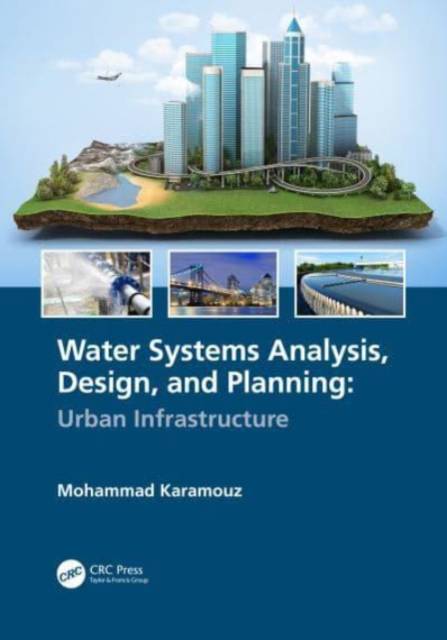
- Afhalen na 1 uur in een winkel met voorraad
- Gratis thuislevering in België vanaf € 30
- Ruim aanbod met 7 miljoen producten
- Afhalen na 1 uur in een winkel met voorraad
- Gratis thuislevering in België vanaf € 30
- Ruim aanbod met 7 miljoen producten
Water Systems Analysis, Design, and Planning
Urban Infrastructure
Mohammad KaramouzOmschrijving
This book presents three distinct pillars for analysis, design, and planning: urban water cycle and variability as the state of water being; landscape architecture as the medium for built-by-design; and total systems as the planning approach. The increasing demand for water and urban and industrial expansions have caused myriad environmental, social, economic, and political predicaments. More frequent and severe floods and droughts have changed the resiliency and ability of water infrastructure systems to operate and provide services to the public. These concerns and issues have also changed the way we plan and manage our water resources.
Focusing on urban challenges and contexts, the book provides foundational information regarding water science and engineering while also examining topics relating to urban stormwater, water supply, and wastewater infrastructures. It also addresses critical emerging issues such as simulation and economic modeling, flood resiliency, environmental visualization, satellite data applications, and digital data model (DEM) advancements.
Features:
- Explores various theoretical, practical, and real-world applications of system analysis, design, and planning of urban water infrastructures
- Discusses hydrology, hydraulics, and basic laws of water flow movement through natural and constructed environments
- Describes a wide range of novel topics ranging from water assets, water economics, systems analysis, risk, reliability, and disaster management
- Examines the details of hydrologic and hydrodynamic modeling and simulation of conceptual and data-driven models
- Delineates flood resiliency, environmental visualization, pattern recognition, and machine learning attributes
- Explores a compilation of tools and emerging techniques that elevate the reader to a higher plateau in water and environmental systems management
Water Systems Analysis, Design, and Planning: Urban Infrastructure serves as a useful resource for advanced undergraduate and graduate students taking courses in the areas of water resources and systems analysis, as well as practicing engineers and landscape professionals.
Specificaties
Betrokkenen
- Auteur(s):
- Uitgeverij:
Inhoud
- Aantal bladzijden:
- 924
- Taal:
- Engels
Eigenschappen
- Productcode (EAN):
- 9780367528454
- Verschijningsdatum:
- 29/12/2021
- Uitvoering:
- Hardcover
- Formaat:
- Genaaid
- Afmetingen:
- 178 mm x 254 mm
- Gewicht:
- 1859 g

Alleen bij Standaard Boekhandel
Beoordelingen
We publiceren alleen reviews die voldoen aan de voorwaarden voor reviews. Bekijk onze voorwaarden voor reviews.











